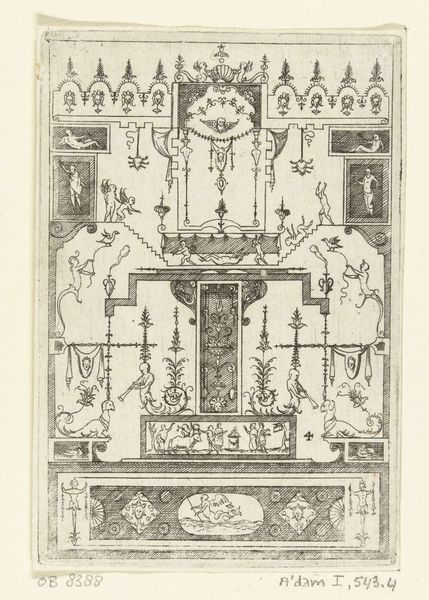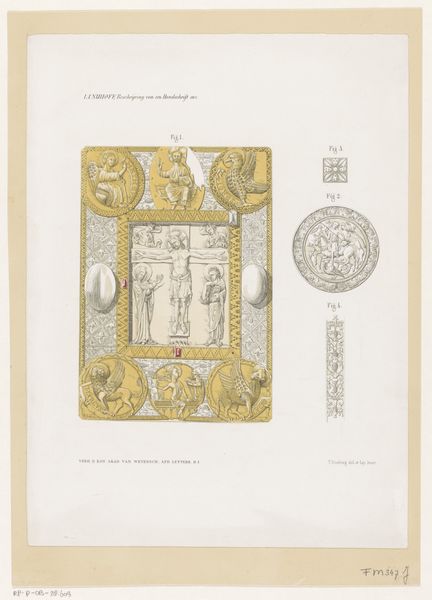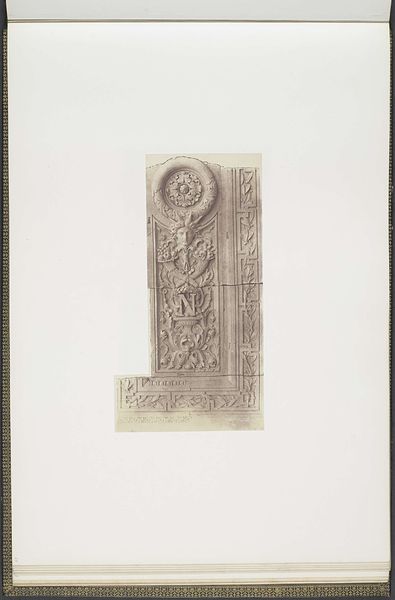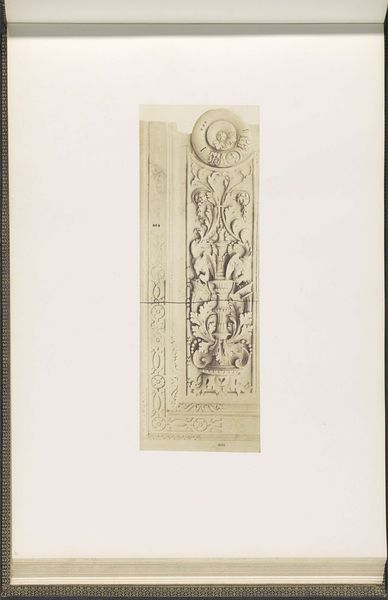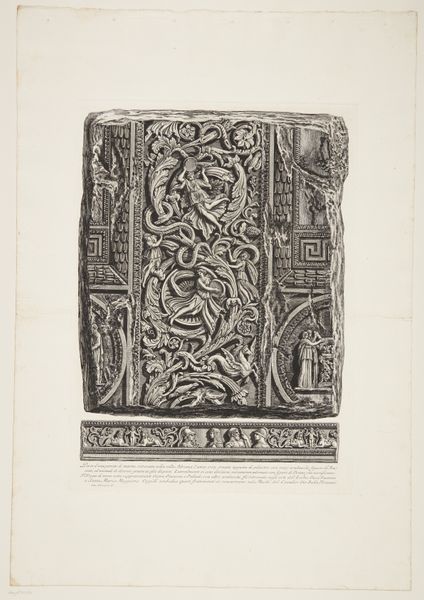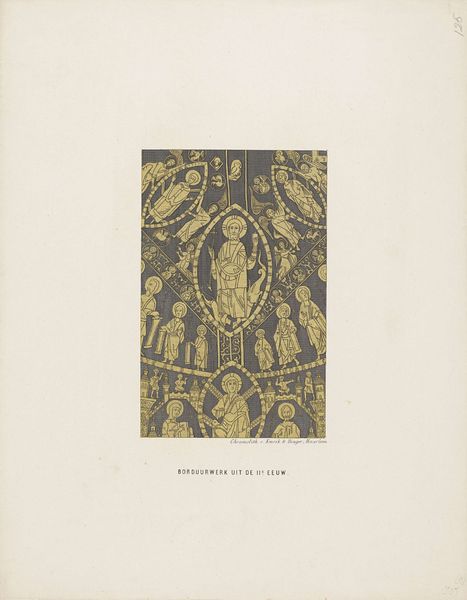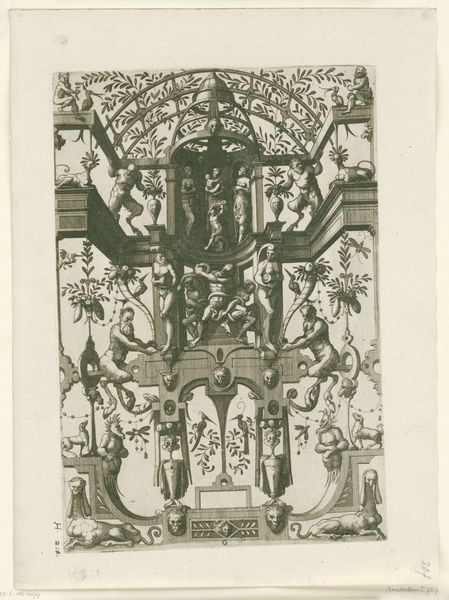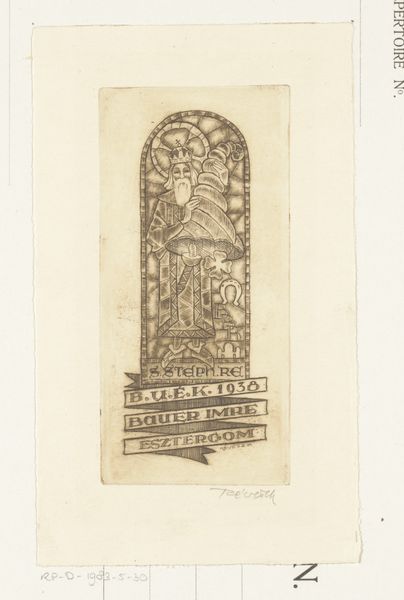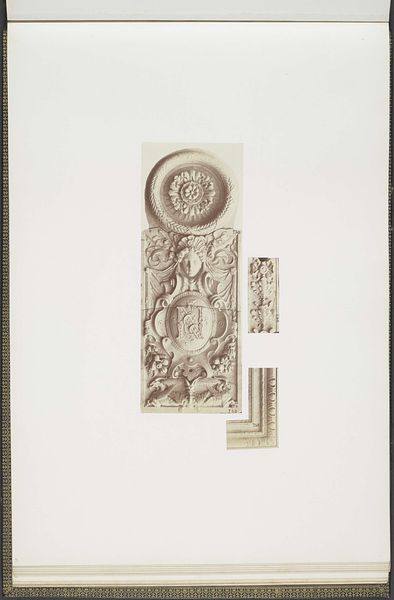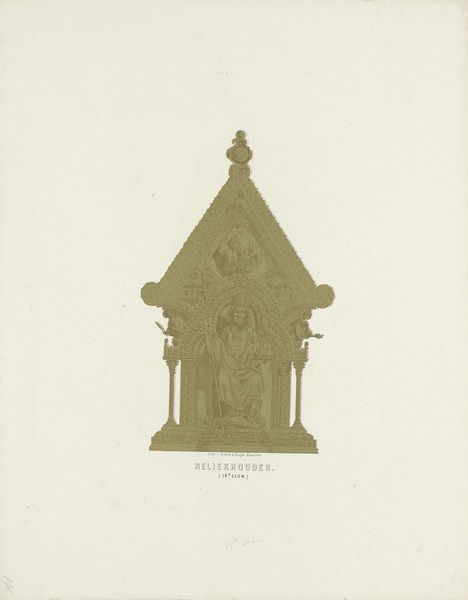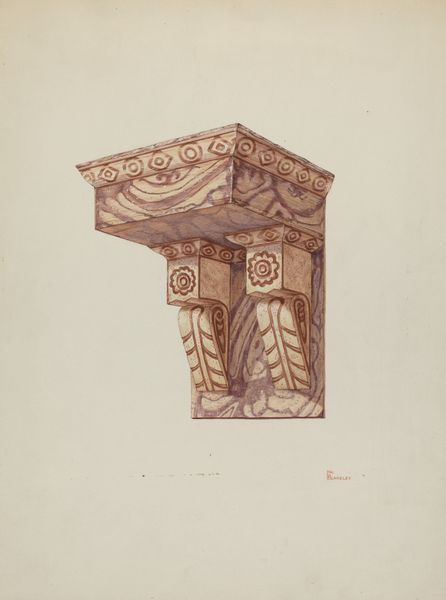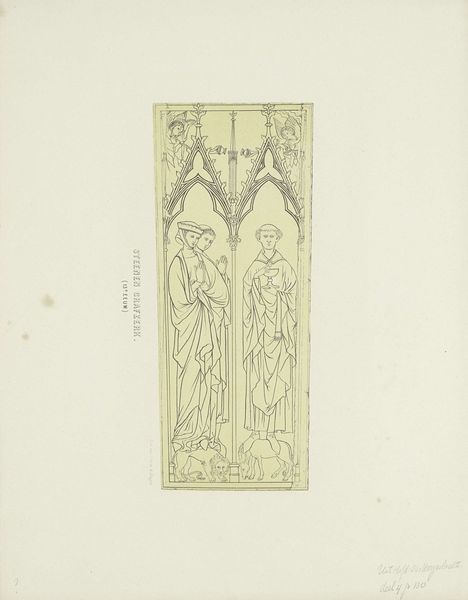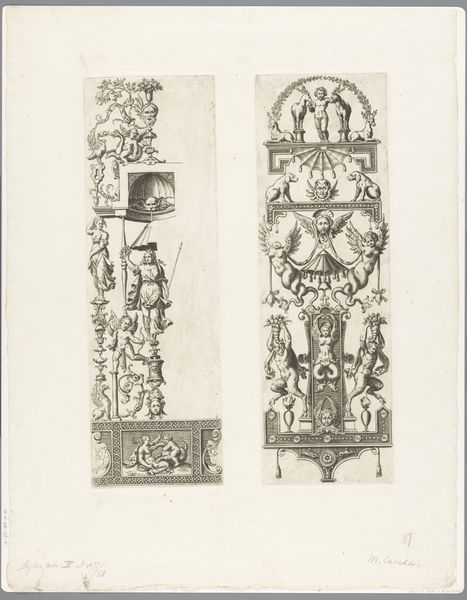
print, relief, sculpture, engraving
#
medieval
# print
#
relief
#
figuration
#
sculpture
#
history-painting
#
engraving
Dimensions: height 292 mm, width 375 mm
Copyright: Rijks Museum: Open Domain
Curator: Before us we have a print depicting a sculpted triptych dating from the 13th century. The print itself was created anonymously sometime between 1857 and 1864. Editor: It has such a delicate quality. Even in this rendering, the implied texture and detail give the figures an expressive quality, and the stark presentation against a pale background emphasizes their isolation. There’s a very human feel here, a stillness like one holds their breath in awe or grief. Curator: A very astute observation. A triptych by its very nature is meant to be both personal and communal. It serves as a focal point for prayer but also contains within its panels a narrative meant to instruct and connect the viewer to something larger than themselves. The symbolism within the triptych reflects specific doctrines. The scene of the Crucifixion obviously refers to an iconography of sacrifice. The smaller scenes perhaps narrate stories to build upon this religious event and to offer greater understanding. Editor: And the sculptor's hand would be guided by those doctrines but the success of the work hinges on eliciting an emotional reaction. So, whether intentional or not, the arrangement in three segments draws attention to structural patterns of threes, and the work seems to hint to an understanding of wholeness from component parts. Curator: Medieval art employed a variety of symbols. Figures were portrayed following rigid artistic conventions where poses, expressions, and even sizes communicated theological concepts or social hierarchies. For example, haloes or size differences represent divine status, an effort to depict the intangible. In terms of psychology, one finds an assertion of social order amidst much chaos and uncertainty, hence art was not just about conveying information, but creating a kind of psychological stability through shared narratives. Editor: So you see in the sculpture a conscious layering of signs and signifiers working towards coherence— Curator: Precisely! A memory bank expressed in art and belief, psychology and doctrine...a holistic assertion. Editor: The artist achieved the harmony desired. It's as if the whole is whispering stories across time. Curator: Yes, stories crafted in structure, sign and symbol that continue to connect us to the distant past, offering insights into human emotions, communal dreams, and even, the desire for order.
Comments
No comments
Be the first to comment and join the conversation on the ultimate creative platform.
